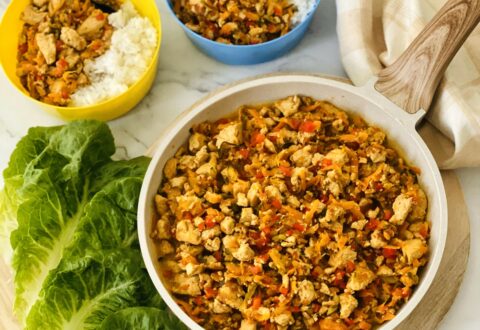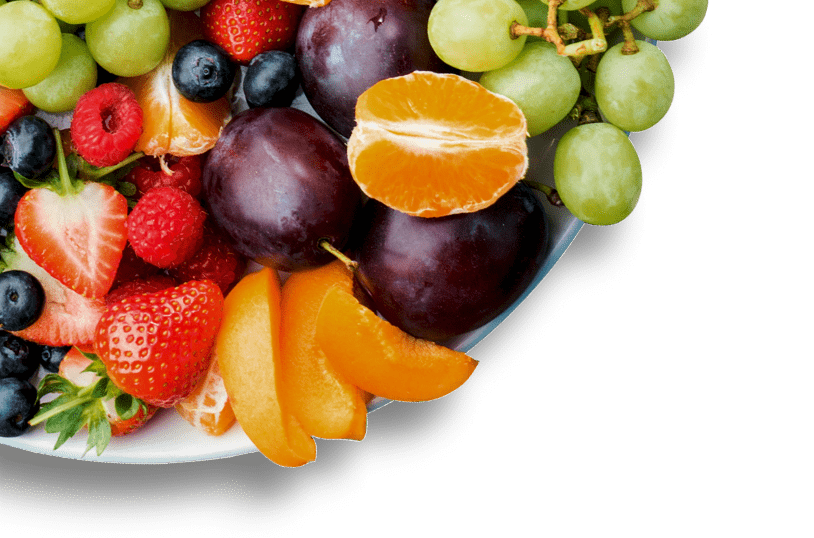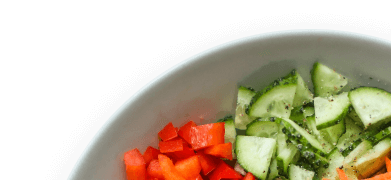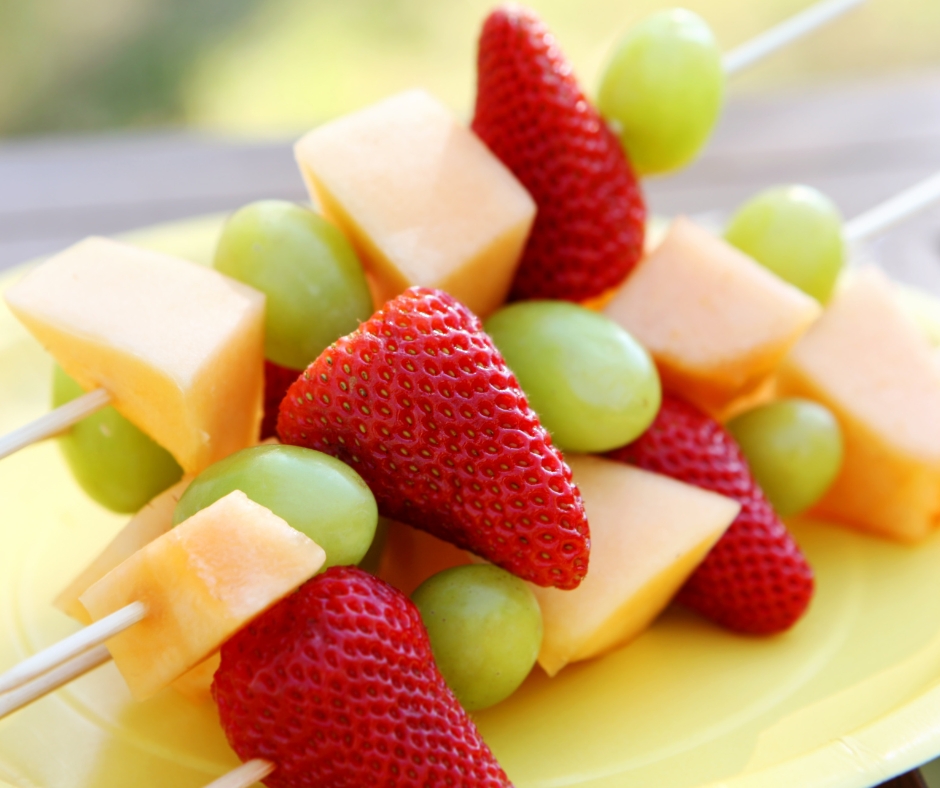Healthy eating and oral health policy checklist
This document broadly outlines what needs to be included in a policy to ensure a whole-service approach to health and wellbeing is embedded and all benchmarks for healthy eating and oral health are met.

Overview
A policy is important as it provides staff, carers, parents and families with clear and consistent information about your service’s goals and practices.
Please use the checklist below to review the procedures/content of your healthy eating and oral health policy. The overall message of each of these statements should be included in your policy, although the exact wording is not required. Early childhood services are recommended to personalise this policy to ensure it reflects their needs and specific practices by adding more detail to show ‘how’ the required procedures/benchmarks are met. This checklist will ensure that your policy meets the requirements of the Smiles 4 Miles Award and the Achievement Program’s benchmarks.
| Dimension | Required procedures/benchmark content | ✓ |
|---|---|---|
| Leadership and commitment | This policy contains the following information: • purpose • background • definitions (‘Healthy eating’, ‘oral health’, ‘nutrition’, ‘discretionary/sometimes food and drinks’) • procedures and responsibilities • relevant legislation and policies • related service policies • ratified date and planned review date | |
| This policy is shared with the whole service community with opportunities to provide feedback/input. | ||
| This policy is ratified by management and reviewed at least every 3 years.* | ||
| Healthy physical environment | Water (preferably tap water) is accessible for drinking at all times. | |
| If the service provides food: The menu meets the Australian Dietary Guidelines and the Infant Feeding Guidelines; the menu is displayed for parents and carers and has been assessed using the Healthy Eating Advisory Service’s FoodChecker tool. | ||
| Healthy food and drinks are promoted and discretionary /sometimes food and drinks are discouraged for snacks and lunches that are brought in from home by staff or families/children. | ||
| There is suitable space for breastfeeding and storing breastmilk.** | ||
| Best practices are followed in relation to bottle feeding and sipper cups as outlined in the Infant feeding guidelines.** | ||
| Safe food handling practices are followed, including safe procedures for food storage, handling, preparation and disposal, and food safety training. | ||
| Healthy culture | Diversity and culture are considered when implementing healthy eating and oral health practices and when planning menus. | |
| Educators interact with children at meal times and role model healthy eating. | ||
| Food and drinks are not used as an incentive or reward. | ||
| Celebrations and events include healthy food options and discourage discretionary options. | ||
| Oral hygiene practices are promoted and undertaken at the service when appropriate. | ||
| Child teaching and learning | Children are educated about healthy eating and oral health, including how to make healthy choices about food and drinks and the importance of brushing teeth. | |
| Educators and staff are supported to access professional development and resources to enable them to deliver healthy eating and oral health education. | ||
| Supported staff and educators | Educators are supported to consume healthy food and drinks and maintain good oral health practices at work. | |
| Healthy eating and oral health information and policy requirements are included in educator and staff orientation/induction. | ||
| When food is provided to staff and educators for meetings, celebrations and events, healthy food options are included and discretionary options are discouraged. | ||
| Families and community partnerships | Healthy eating and oral health information is provided to families, such as information about accessing local dental services and how to create healthy and nutritious meals. | |
| The service’s menu**, recipes and healthy eating and oral health policy/s will be made available to families. | ||
| Partnerships are established with relevant organisations and health professionals to support healthy eating and oral health practices, where appropriate. |
* Services participating in the Smiles 4 Miles program are required to review their policy every 2 years.
** Include only if this is appropriate for your service.
Sample definitions
Healthy eating and oral health:
For the purposes of this policy and for the Healthy Early Childhood Services Achievement Program, the ‘Healthy Eating and Oral Health’ health priority area focuses on supporting healthy eating, including nutrition, positive food habits and food literacy, and supporting oral health and hygiene practices.
Healthy eating:
Eating a wide variety of foods from the five food groups each day. These are:
- fruit
- vegetables and legumes/beans
- grain (cereal) foods, mostly wholegrain
- milk, yoghurt, cheese, and alternatives
- lean meat, poultry, fish, eggs, tofu, nuts and seeds, and legumes/beans.
Healthy eating also means eating in a way that is socially and culturally appropriate, having regular meals and snacks and eating food to satisfy hunger, appetite and energy needs. (iii)
Nutrition:
The process of providing or obtaining the food necessary for health and growth and development.iv
‘Discretionary’/’Sometimes’ foods and drinks:
Discretionary/sometimes food and drinks are high in saturated fat, added sugar, and/or added salt. They typically have very little nutritional value and are often processed and packaged.
Examples of discretionary foods and drinks include:
- chocolate, confectionery, jelly
- sweet biscuits, high fat/salt savoury biscuits, potato chips
- high sugar/high fat cakes and slices
- cream, ice cream
- deep fried foods (e.g. hot chips) and pastry based foods (pies, sausage rolls and pasties)
- most fast food and takeaway foods
- some processed meats (e.g. sausages, frankfurts/hot dogs, salami, strasbourg, devon, some
commercial chicken nuggets and fish fingers) - soft drinks, fruit juice and fruit drinks, cordial, sports drinks, sports waters, sweetened waters,
energy drinks, flavoured milk, flavoured mineral water, iced teas and energy drinks.v
Oral health:
A standard of health of the oral and related tissues that enables an individual to eat, speak and socialise without active disease, discomfort or embarrassment and that contributes to general wellbeing. (vi)
Food literacy:
Food literacy is “a collection of inter-related knowledge, skills and behaviours required to plan, manage, select, prepare and eat food to meet (dietary) needs”. (vii)
Relevant legislation and policy documents
- Education and Care Services National Law Act 2010
- Education and Care Services National Regulations 2011:
- PART 4.2—CHILDREN’S HEALTH AND SAFETY 97 Division 1—Health, safety and wellbeing of children — Regulations 77, 78, 79, 80
- PART 4.7—LEADERSHIP AND SERVICE MANAGEMENT Division 2—Policies and procedures — Regulation168 (2) (a) (i)
- ACECQA National Quality Standard 2018 – Quality Area 2, Quality Area 6, Quality Area 7
- Get Up and Grow. Healthy Eating and Physical Activity for Early Childhood. Australian Government, 2009
- Belonging, Being and Becoming. The Early Years Learning Framework for Australia. Commonwealth of Australia, 2009
- Victorian Early Years Learning and Development Framework For all Children from Birth to Eight Years. Department of Education and Training, 2016
- Australian Dietary Guidelines. National Health and Medical Research Council, 2013 1
- Infant Feeding Guidelines, National Health and Medical Research Council, 2012 2
- DET Safe Food Handling & NCAC Food Safety Information Sheet
References
i National Health and Medical Research Council, (2013), Australian Dietary Guidelines, Canberra: National Health and Medical Research Council. Available at: www.eatforhealth.gov.au
ii National Health and Medical Research Council (2012), Infant Feeding Guidelines. Canberra: National Health and Medical Research Council. Available at www.nhmrc.gov.au/about-us/publications/infantfeeding-guidelines-information-health-workers#block-views-block-file-attachments-content-block-1
iii Nutrition Australia Victorian Division, www.nutritionaustralia.org
iv http://oxforddictionaries.com/definition/english/nutrition
v Department of Health and Human Services, Healthy Eating Advisory Service (2012) Menu planning guidelines for long day care, State Government of Victoria. Available at http://heas.health.vic.gov.au/early-childhood-services/menu-planning/long-day-care/guidelines
vi Healthy Mouths Healthy Lives: Australia’s National Oral Health Plan 2015-2024. COAG Health Council 2015 http://www.coaghealthcouncil.gov.au/Publications/Reports/ArtMID/514/ArticleID/81
vii Vidgen HA, Gallegos, D, (2014). Defining Food Literacy and its components. Appetite, 76, 50-59. Retrieved from https://blogs.deakin.edu.au/apfnc/wpcontent/uploads/sites/119/2015/06/Vidgen_2014_food-literacy-Appetite.pdf
For more information please phone 1300 22 52 88 or email heas@nnf.org.au
Except where otherwise indicated, the images in this document show models and illustrative settings only, and do not necessarily depict actual services, facilities or recipients of services. This document may contain images of deceased Aboriginal and Torres Strait Islander peoples. In this document, ‘Aboriginal’ refers to both Aboriginal and Torres Strait Islander people. ‘Indigenous’ or ‘Koori/Koorie’ is retained when part of the title of a report, program or quotation. Copyright © State of Victoria 2016
Written and reviewed by dietitians and nutritionists at National Nutrition Foundation, with support from the Victorian Government.

Related resources
Featured recipes
Explore all recipes
Register your interest
"*" indicates required fields













